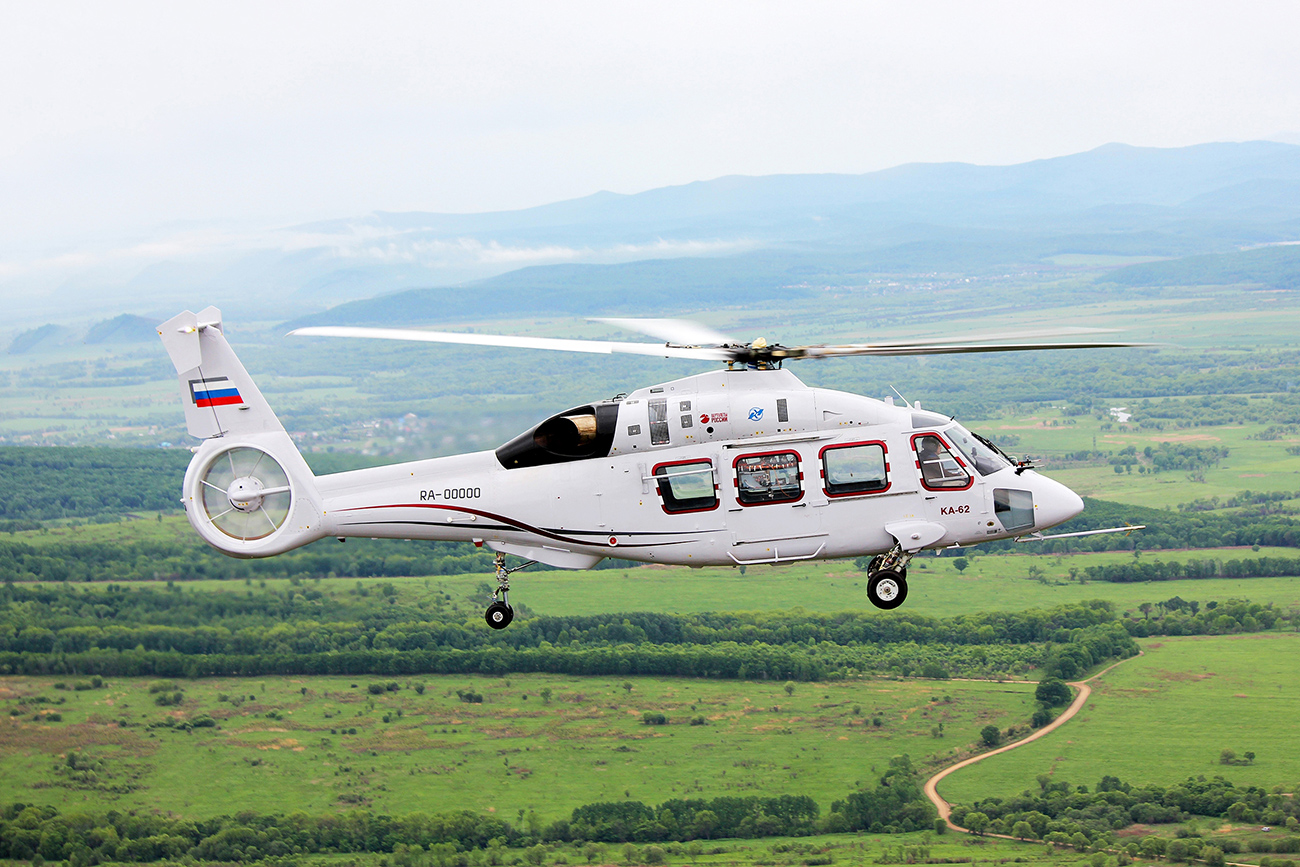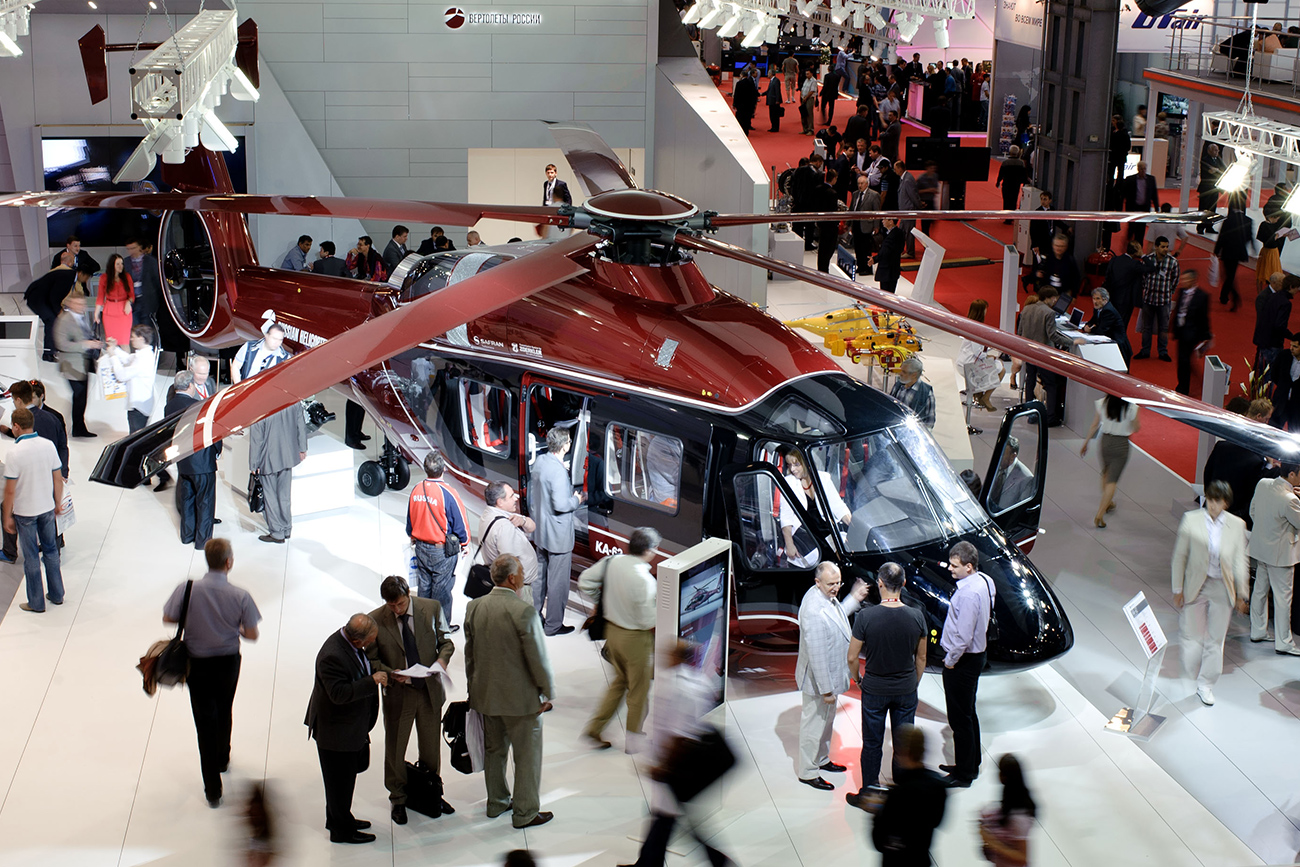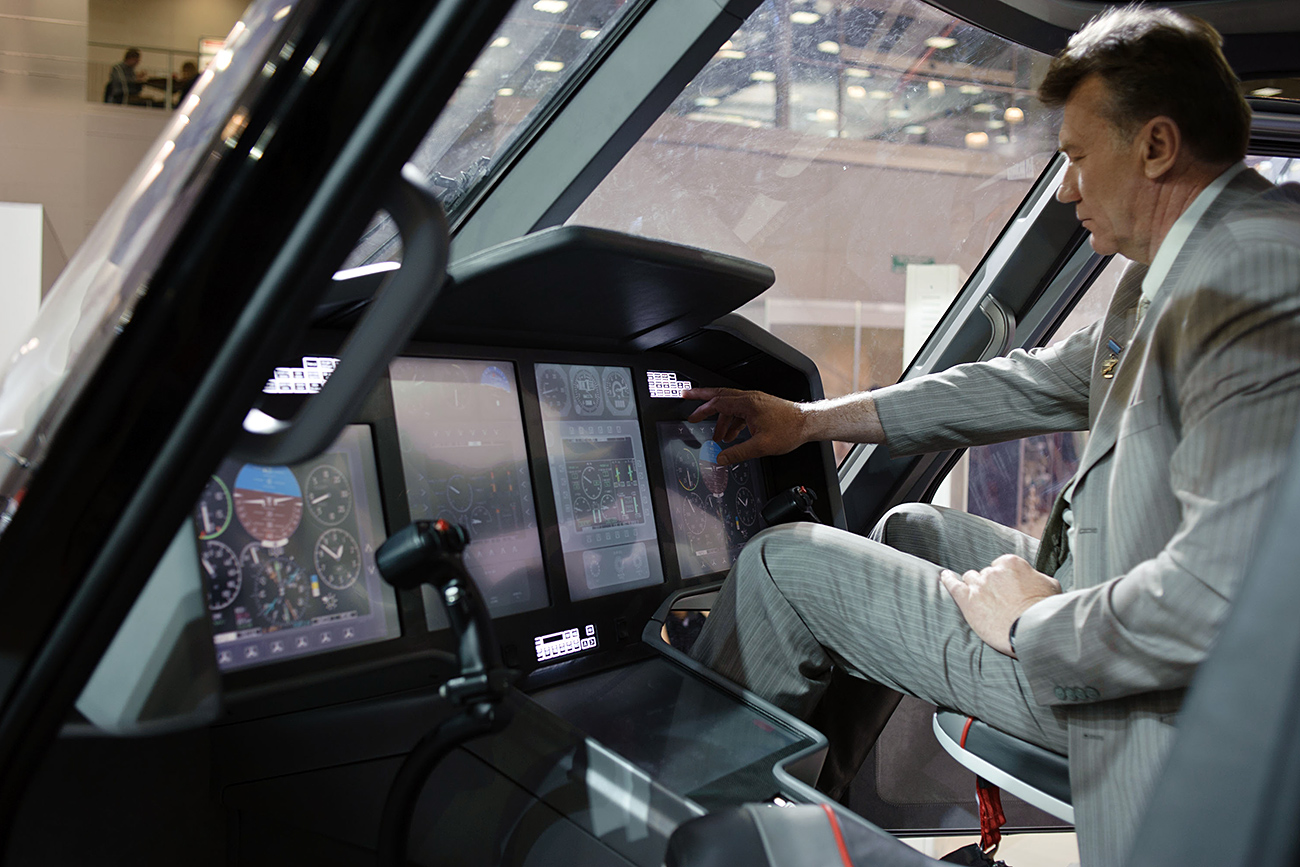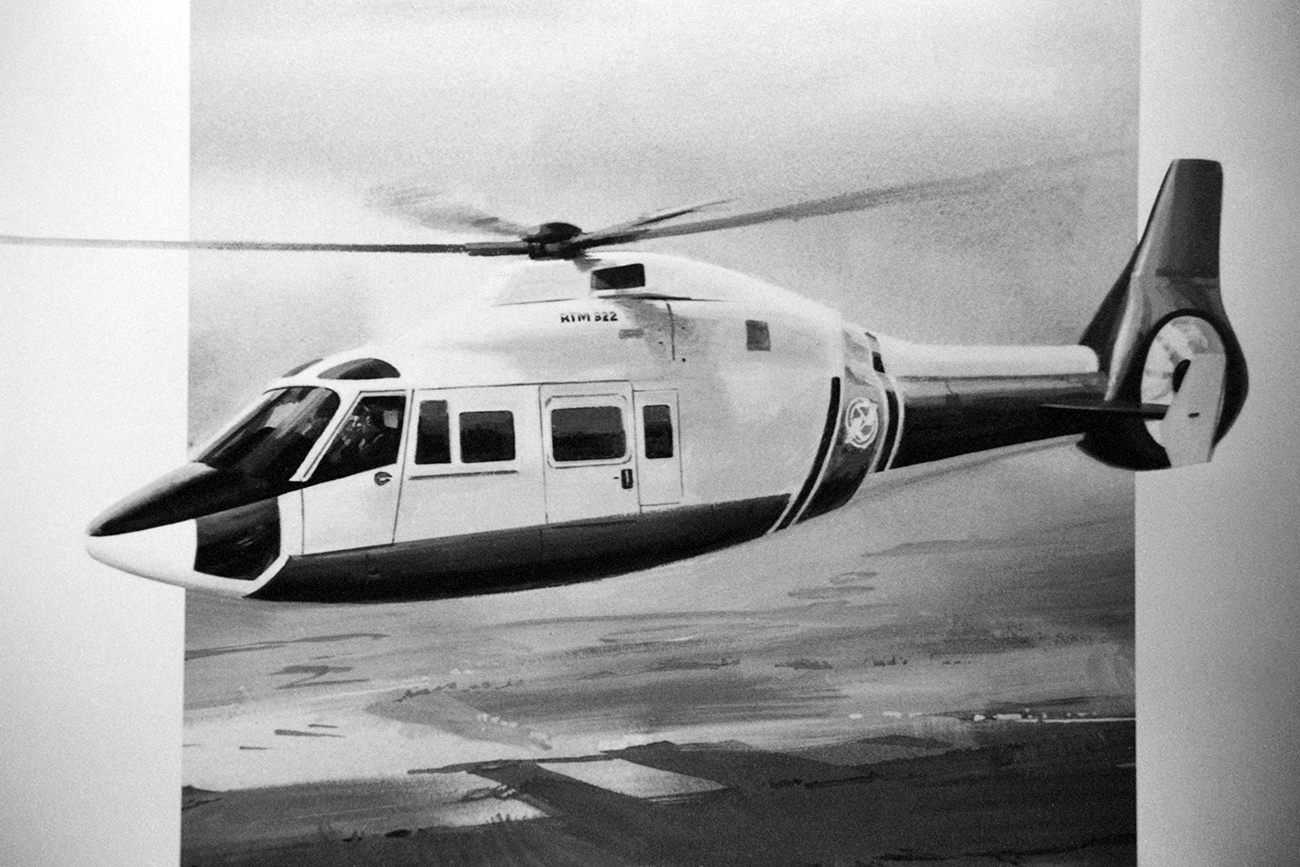
The Ka-62 helicopter on its first test flight.
Russian HelicoptersThe Kamov Ka-62 multirole helicopter first flew during the HeliRussia 2017 exhibition in May 2017. The flight became somewhat of a sensation: The aircraft had been in development for over 20 years, and few experts expected it to take off at all.
“Paradoxically, the helicopter was originally intended for the military,” says retired Col-Gen Leonid Ivashov, president of the International Center for Geopolitical Analysis. “Back then it was known as the Ka-60 Kasatka (“Killer Whale”). The current all-new variant is a civil aircraft, which is being positioned on the market as competition to the wildly popular Italian AgustaWestland AW139. The Italian model is in series production; customers include government agencies and oil-and-gas companies around the world.”
The only thing the Ka-62 has in common with the original military project is the airframe - or mechanical structure. It was intended as a combat control aircraft for Ka-50 Black Shark strike helicopters.
 Visitors watch a Russian Ka-62 helicopter during the HeliRussia-2012 exhibition in Moscow. / ZUMA Press/Global Look Press
Visitors watch a Russian Ka-62 helicopter during the HeliRussia-2012 exhibition in Moscow. / ZUMA Press/Global Look Press
“The Ka-60 was to carry a tactical data system, electronic and optical intelligence equipment, and electronic countermeasures,” Ivashov says. “The helicopter was to become the brain of a uniform command and control system. But this never happened.”
First the military gave up on the Ka-50 idea: Its single pilot, the reasoning went, would be unable to detect and engage targets while flying very fast and very low. This decision effectively made a dedicated command helicopter unnecessary.
The Ka-50 misfortune did not dishearten chief designer Sergey Mikheyev. He developed two different Ka-52 variants for the Russian army: One for the ground troops, the other for the navy.
The navalized, ship-based version, known as Katran, carries two powerful cruise missile types: The anti-missile Kh-35 and the Kh-31, which can counter MIM-104A Patriot surface-to-air missile systems. Until recently, only Sukhoi Su-33 and MiG-29K/KUBR carrier-based fighters were capable of using these weapons.
Mikheyev applied a similar approach to the Ka-60. He stripped the project of all its military components and focused on creating a civil helicopter.
“The main change had to do with the engines. The original Russian-made powerplants were replaced with French-made 1,680-hp Turbomeca Ardiden 3g engines with a FADEC digital control system,” says Vadim Kozyukin, a professor at the Academy of Military Sciences. “FADEC reduces the pilot's workload and saves fuel. The new engines improved the helicopter's operational performance and speed.”
 A visitor trys the operation system of a Russian Ka-62 helicopter during the HeliRussia-2012 exhibition in Moscow. / ZUMA Press/Global Look Press
A visitor trys the operation system of a Russian Ka-62 helicopter during the HeliRussia-2012 exhibition in Moscow. / ZUMA Press/Global Look Press
Kozyukin says the Ka-62 has higher cruise airspeed (290 km/h) and maximum airspeed (308 km/h) than most Western equivalents. It also has fully composite rotor blades.
“Strong and light composite materials account for 60 percent of the Ka-62’s structure,” Kozyulin notes. “This is a very high ratio for modern aircraft.”
The cabin seats 15 passengers. The helicopter can also be tailored for air ambulance, transport, or VIP variants. The latter one, intended for senior officials and top managers, is believed to be the most promising version, despite the fact that it would be pitted against the AW139 - which is already on the market.
Experts compare the Ka-62 with another Russian aviation project, the Sukhoi Superjet 100 regional airliner. Both aircraft incorporate a significant number of foreign-made components.
“Given today’s situation in Russia, this is both good and bad,” Kozyulon notes. “On the one hand, Ka-62 production is fully dependent on the political situation and possible sanctions. On the other hand, it will make international certification and global marketing easier.”
 The project of Ka-62 helicopter, 1993. / Vladimir Matviyevsky/TASS
The project of Ka-62 helicopter, 1993. / Vladimir Matviyevsky/TASS
Kozyulin says international sales are important to the Ka-62's market success. Should sales prove to be slow, the manufacturer will be unable to return on the investment made over the 20 years of development.
If using any of Russia Beyond's content, partly or in full, always provide an active hyperlink to the original material.
Subscribe
to our newsletter!
Get the week's best stories straight to your inbox